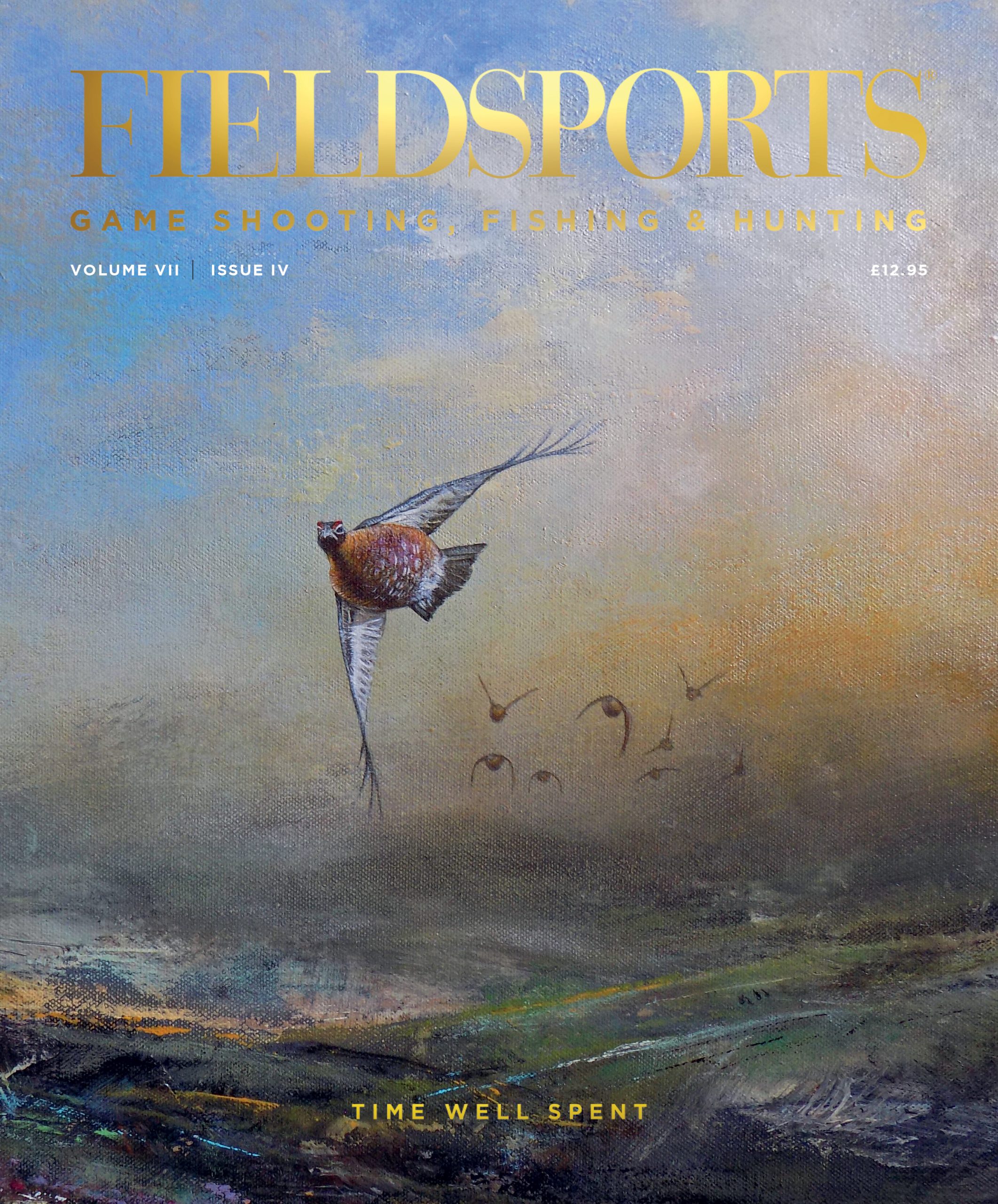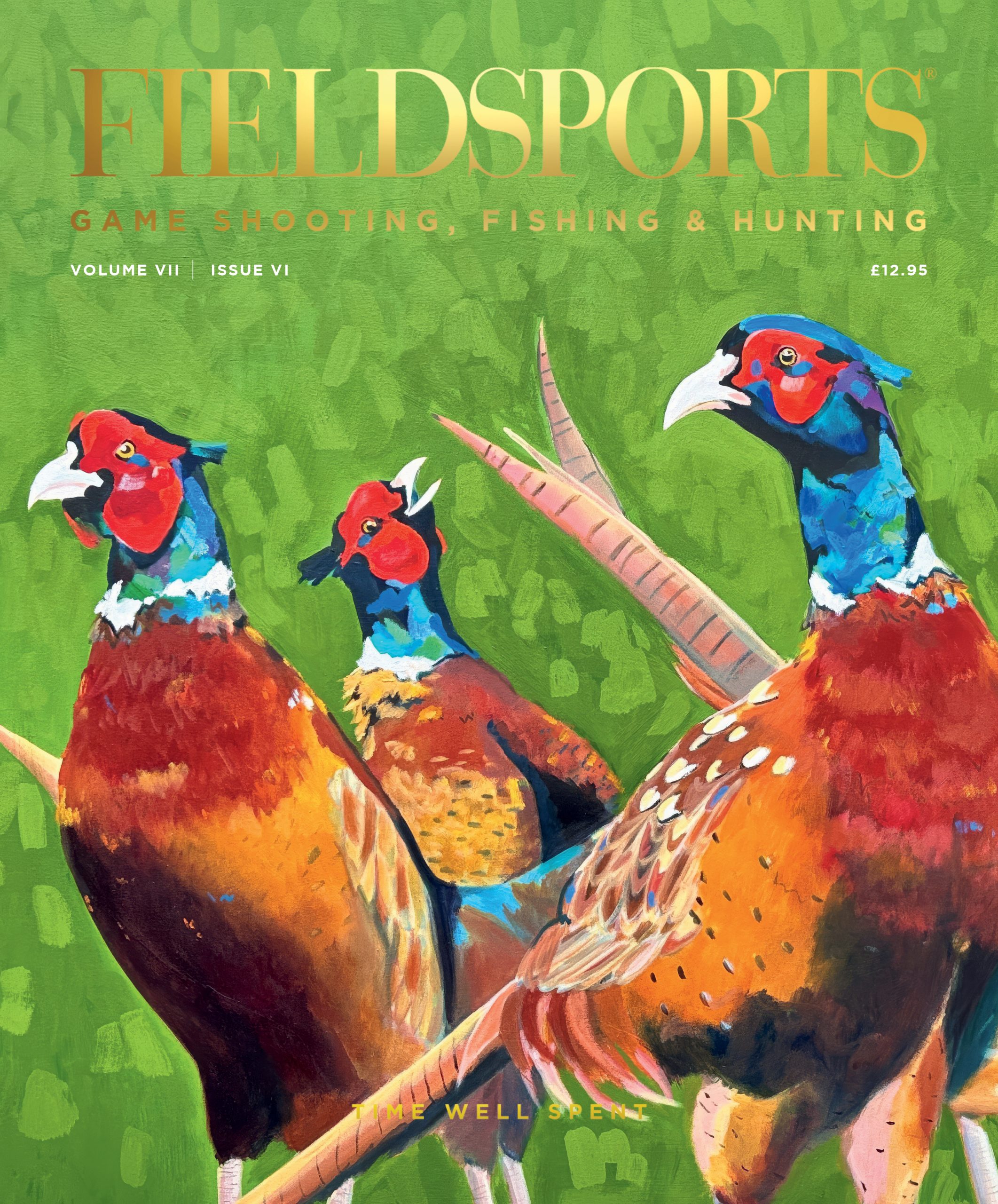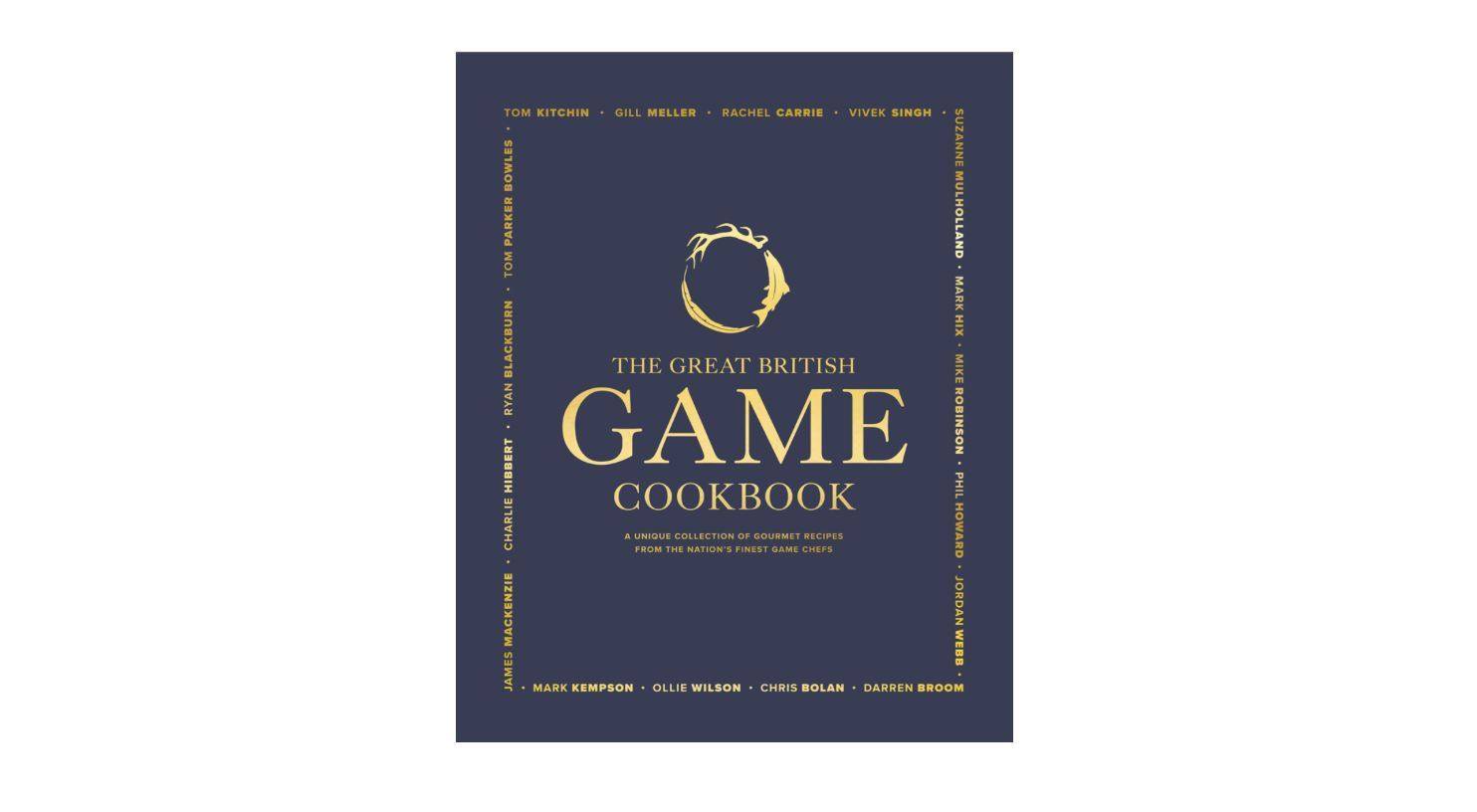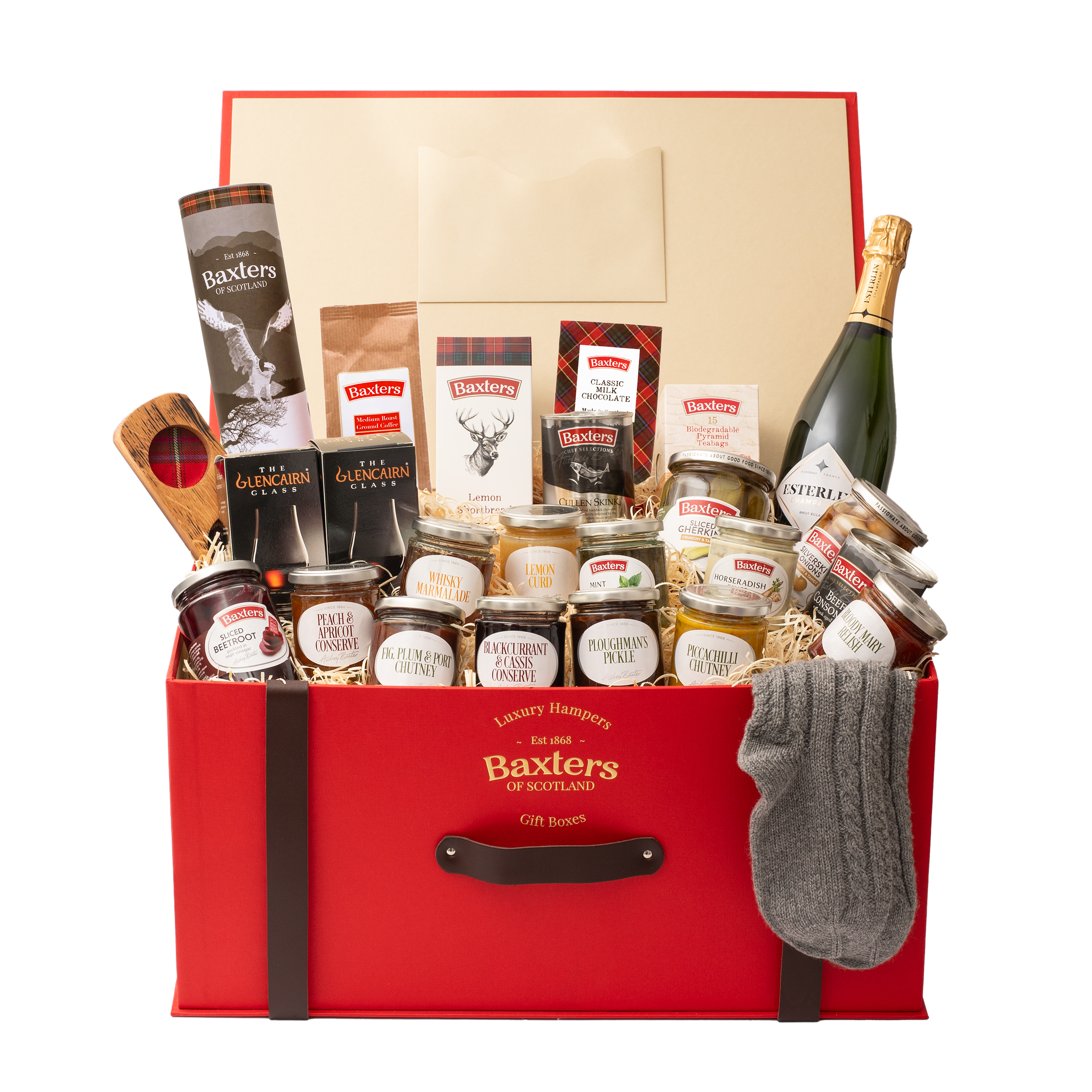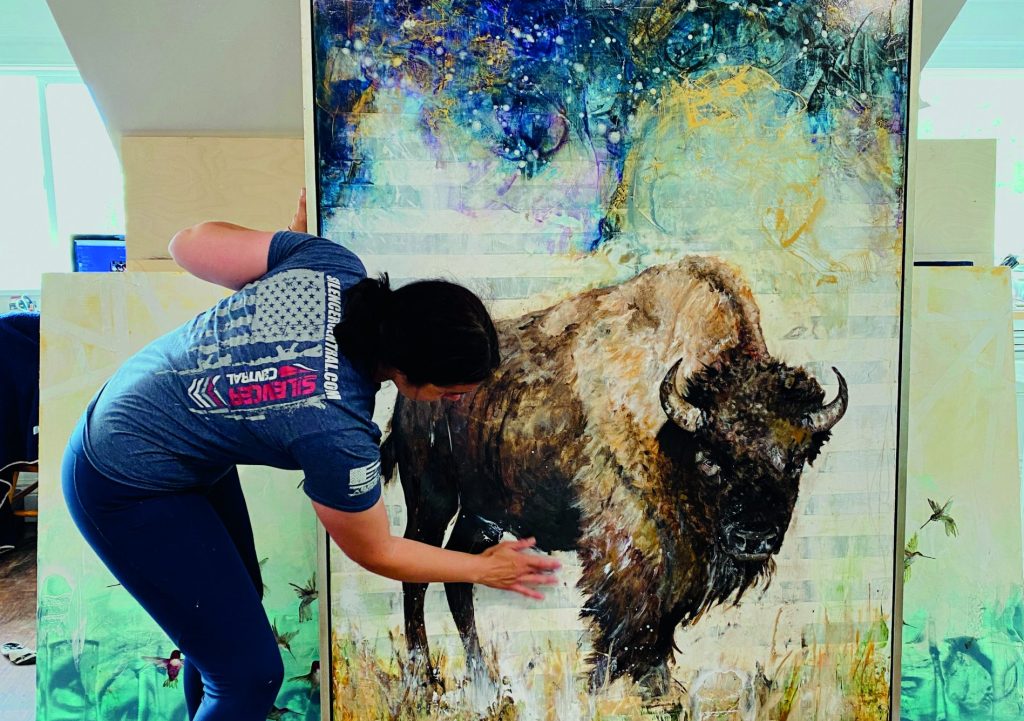Jim Starr
An exclusive interview with celebrated British wildlife art painter Jim Starr

So, who is Jim Starr?
I’m 47 and live in North Devon with my partner Belinda and son Jackson. We live on Exmoor National Park so our house is surrounded by wildlife and game birds. It is nestled between two of the best-known West Country shoots – North Molton and Molland. As a family we are very outdoorsy and enjoy beating then bringing home birds for supper.
What makes your style of wildlife art unique?
There’s lots and lots of very good, very talented bird painters out there, but I think probably what makes my work different is that I work really big. I love huge canvases. I work quite fast so the drips, splashes and mess are a by-product of having to cover such a large space.
My style was a happy accident really. It sort of developed over time. I used to paint really, really small, detailed, tiny little bird studies when I was a child. And then I had a really good art teacher at school – Len Green – who was a modernist painter who got me looking at American abstract expressionist painters, and encouraged me to go big. As for the drippy background, it was when I was doing some commissions for a client a good while ago, she wanted to see the first painting mid-process. To my surprise, she loved it half-finished. She said: “Just leave it there”.
As an artist there is always the inclination to overwork a painting. I’m always fighting with keeping things loose, keeping things light and fresh, and then just picking out little bits of detail here and there that bring the bird forward and the background backwards. Having the confidence to know when to stop is key. This famous quote by artist Paul Gardner really resonates with me: “A painting is never finished – it simply stops in interesting places.”

What or who are your wildlife art influences?
My first bird book was Thorburn’s Birds by James Fisher. As a child I was a massively into birds and birdwatching and I started copying Thorburn’s plates with varying degrees of success. As my knowledge increased, I then saw work by British artists like naturalist Charles Tunnicliffe, printmaker Robert Gilmor and all the classic bird illustrators. I also admire the work of contemporary New Zealand painter Raymond Harris Ching and Canadian artist Robert Bateman. A-level art turned my head upside down and I started looking at maverick painter Francis Bacon and swiss sculptor Alberto Giacometti.
From school days through to art college days I was looking at a lot of American art. American art is often BIG. I love works by abstract expressionists like Willem DeKooning, Robert Motherwell and Clyfford Still. Also, I love the work of pop artists Jim Dine and Larry Rivers.
I then completed a foundation at Chelsea College of Art and a degree in illustration specialising in printmaking at Kingston University. Originally I worked as a commercial illustrator in London for seven years. I worked on books, magazines and newspapers such as The Times and The Economist. Plus I did some jobs for some advertising agencies and various big brands. I enjoyed it but it wasn’t really my real passion. My real passion still was in travelling, being outdoors being in the countryside. It has taken me 25 years to get to a point where I am a full-time wildlife artist.
Do you listen to anything while you work?
Yes, all sorts. Everything from jazz, classical and electronic trance music to Led Zeppelin and Jimi Hendrix.
Describe your studio.
I’m very lucky, I’ve got about four or five studios. When it’s winter, I tend to paint indoors. So the one I’m in at the moment is our office. Then there’s a big double garage that I work in and a stable block that I work in. They are all chaotic and messy. There are shelves stacked with paints, acrylics and spray cans, other shelves holding sketchbooks and scrapbooks, and three chests full of screen prints. There are precarious piles of magazines, periodicals and books. Plus a spotting scope and binoculars close by in case an interesting bird arrives in the garden.
Then there’s the canvases. I am probably working on 50 paintings at a time. I have literally run out of room at home so I have just opened a gallery off the high street in Ilfracombe. During the summer months I work outside. I am making a conscious effort to spend more time sketching birds in their natural habitat.

What was the very first piece of wildlife art you sold?
It was as a small watercolour of a grey heron – I can remember it quite vividly. I was 13 and sold it to my art teacher for £100 which I spent on art materials. He was a key figure in my journey. At school my paintings were getting smaller and smaller. I once showed him a tiny painting I had done of a goldcrest which was only about the size of a postage stamp. It was a pivotal moment. My art teacher said, right, stop it. He said go big. Stop painting from your wrist, try standing up working from your shoulder. It was a revelation.
As an artist, what gives you most satisfaction?
That’s a good question and I know how to answer that straightaway. I’ve been narrowing the gap between what’s in my head and what appears on the canvas. Paintings start up here, and I can see them clearly but often my technical ability and skill can’t get me there. But I’m beginning to close that gap. I’m becoming happier with the results that I’m making. Most of the paintings that I produce are not what I intended. There’s a lot of experimentation, and sometimes it works but sometimes it doesn’t. There’s a lot of hit and miss!
Where can readers view your wildlife art?
Since 2016, my work has been sold via Rountree Tryon gallery in Petworth, the Paragon gallery in Cheltenham and Cross Gate Gallery in Kentucky. Readers can also see my work at my new gallery/showroom at 3a Marlborough Road in Ilfracombe.
Related Articles
Get the latest news delivered direct to your door
Subscribe to Fieldsports Journal
Elevate your experience in the field with a subscription to Fieldsports Journal, the premium publication for passionate country sports enthusiasts. This bi-monthly journal delivers unparalleled coverage of game shooting, fishing and big game across the UK and beyond.
Each issue offers a stunning collection of in-depth features, expert opinions and world-class photography, all presented in a timeless yet contemporary design.
Save 10% on shop price when you subscribe, with a choice of packages that work for you. Choose from Print & Digital or Digital only with each journal delivered directly to your door or via the app every other month, plus access to past issues with the digital back issue library.
